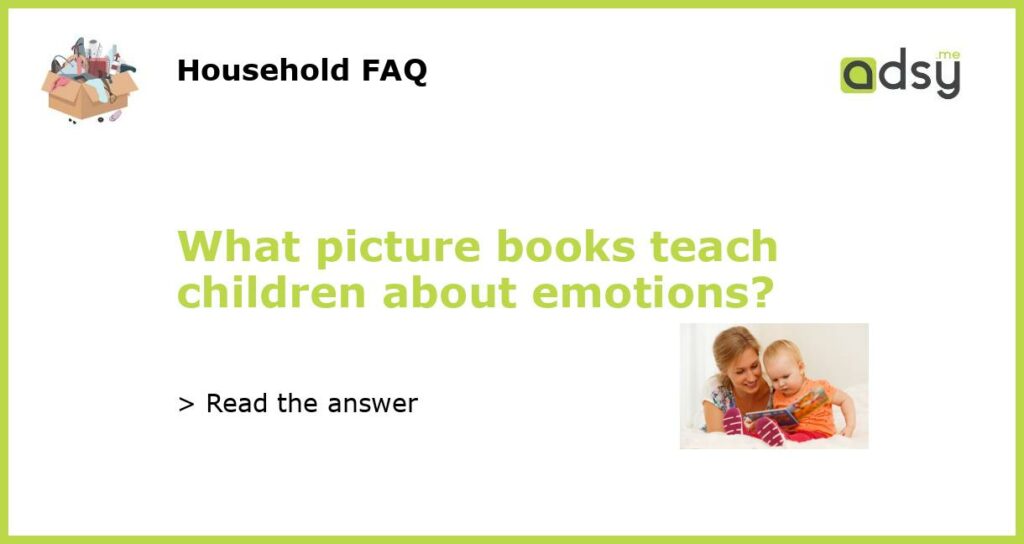Picture Books and Emotional Development
Picture books play a crucial role in children’s emotional development. These visually engaging stories help children navigate and understand their own emotions, as well as the feelings of others. Through relatable characters and captivating illustrations, picture books provide a safe and accessible platform for children to explore and make sense of their emotions.
Emotional Vocabulary and Self-Expression
Picture books help children build their emotional vocabulary and improve their ability to express their feelings. Characters in these books often experience a range of emotions, including happiness, anger, sadness, and fear. By encountering these emotions in stories, children can learn to label and articulate their own feelings more effectively.
Moreover, picture books can provide children with a diverse range of emotional experiences, helping them understand that it is normal to feel a variety of emotions. This understanding can lead to increased empathy and a greater capacity for emotional intelligence.
Identifying and Managing Emotions
Picture books also teach children how to identify and manage their emotions. Many stories feature characters who face challenges or difficult situations, and children can observe how these characters navigate their emotions and find constructive ways to cope.
Whether it’s a character taking deep breaths to calm down or finding comfort in sharing their feelings with a trusted friend, picture books provide children with tangible examples of healthy emotional management. By witnessing these strategies, children develop the skills needed to regulate their own emotions and cope with various situations.
Empathy and Understanding Others
A significant aspect of emotional development is the ability to empathize with others and understand their emotions. Picture books foster empathy by introducing children to diverse characters and their emotional journeys. By seeing a character’s perspective and understanding their emotions, children learn to relate to others in a more compassionate and understanding manner.
Through books like “The Invisible Boy” by Trudy Ludwig or “The Rabbit Listened” by Cori Doerrfeld, children learn about the feelings of loneliness, exclusion, and kindness towards others. These stories help children develop an understanding of the impact their actions can have on others and encourage empathy and inclusivity.
Emotional Resilience and Coping Skills
Picture books can also teach children valuable lessons about emotional resilience and coping skills. Characters in these stories often face adversity and difficult emotions, providing children with role models for resilience and problem-solving.
Books like “When Sadness is at Your Door” by Eva Eland or “The Kissing Hand” by Audrey Penn demonstrate strategies and coping mechanisms for managing emotions in healthy ways. These stories show children how to face and overcome challenges, promoting emotional resilience and providing them with tools to navigate life’s ups and downs.
In conclusion, picture books are powerful tools for teaching children about emotions. They enhance emotional vocabulary, encourage self-expression, teach emotion identification and management, foster empathy, and promote emotional resilience and coping skills. So next time you’re choosing a book for a child, consider its potential to teach important lessons about emotions and emotional well-being.






